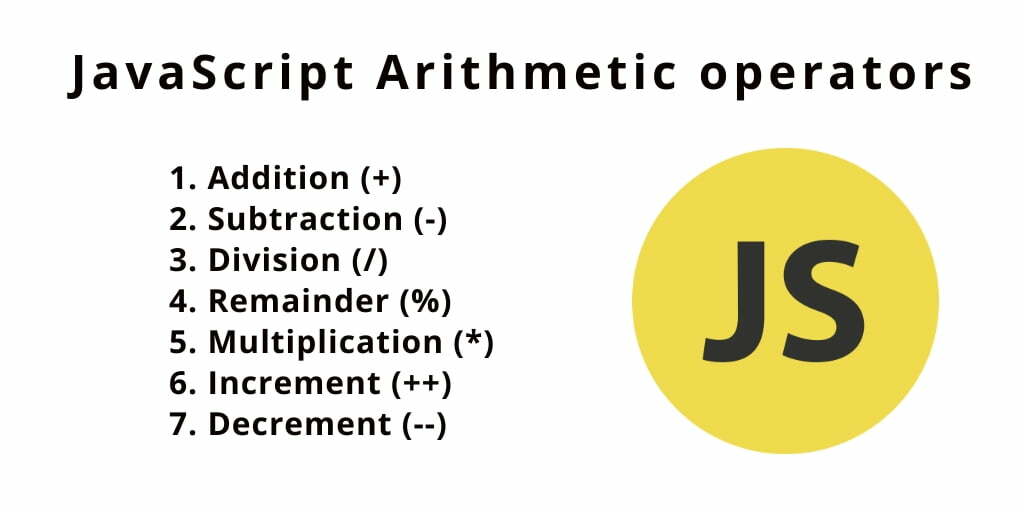|
x = 20; y = 5; |
result | ||
| + | Additon |
result = x + y |
25 |
| - | Subtraction |
result = x - y |
15 |
| * | Multiplication |
result = x * y; |
100 |
| / | Divide | result = x / y; | 4 |
| % | Mode Retrieval | result = y % x; | 0 |
| ++ | Increase | sonuc = x++; | 21 |
| -- | Decrease | result = x--; | 19 |
| ** | Exponentiation | result = 2 ** 3; | 8 |
Additon Operator (+)
var x = 100 + 50;
The numbers one hundred and 50 are brought consistent with the addition operator and the result is transferred into the variable x on the left.
Subtraction Operator (-)
var a = 5; var x = (100 + 50) - a;
After 100 + 50 in parentheses, variable a is subtracted from 150 and the result is 145.
Multiplication Operator (*)
var x = 5; var y = 3; var z = (x + y) * (y - x);
The value of (x+y) in parentheses is multiplied by 8 and the fee of (y-x) is -2 and the result is set to variable z as -16.
Divide Operator (/)
var x = 5; var y = 2; var z = (x * y) / y;
The fee of (x*y) in parentheses is split through 10, which is the value of y, and the end result is transferred as five to the variable z.
Mode Retrieval Operator; (%)
var x = 1001; var y = 2; var z = x % y;
The quantity received by means of dividing the number 1001, that is the value of the variable x, via 2 with out a remainder is 1.
Increase Operator (++)
x = 10; y = x++;
We boom the fee of the x's variable by 1 and set it to the variable y. You can do similar to underneath.
x = 10; y = x + 1;
Decrease Operator (--)
x = 10; y = x--;
We reduce the value of the variable x's by using 1 and set it to the variable y. You can do the same as beneath.
x = 10; y = x - 1;
Exponentiation Operator (**)
var x = 5; var z = x ** 2;
We get the electricity of 5, which is the value of the variable x, with the wide variety 2. Therefore, multiplying 5 by using 2 instances gives the result 25.
